Filter by

Weighting Methods and their Effects on Multi-Criteria Decision Making Model O…
This book provides a systematic way of how to make better decisions in water resources management. The applications of three weighting methods namely rating, ranking, and ratio are discussed in this book. Additionally, data mining on keywords is presented using three popular scholarly databases: Science Direct, Scopus, and SciVerse. Four abbreviated keywords (MCDM, MCDA, MCA, MADM) representing…
- Edition
- -
- ISBN/ISSN
- 978-3-319-12586-2
- Collation
- XI, 166
- Series Title
- -
- Call Number
- -

The Great 1667 Dalmatia Earthquake
The book is also intended as an extensive case history, which allows the author to include some guidelines on how to approach the study of a past earthquake and proceed to its full seismological interpretation. In this respect, a unique feature of the book is the comprehensive and detailed analysis of the original documentary sources in their proper context, effectively combining the interpreta…
- Edition
- -
- ISBN/ISSN
- 978-3-319-16208-9
- Collation
- XVIII, 95
- Series Title
- SpringerBriefs in Earth Sciences
- Call Number
- -
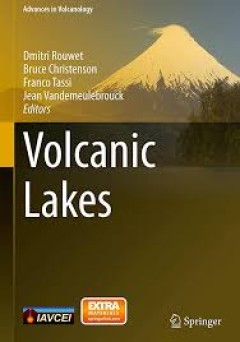
Volcanic Lakes
This book aims to give an overview on the present state of volcanic lake research, covering topics such as volcano monitoring, the chemistry, dynamics and degassing of acidic crater lakes, mass-energy-chemical-isotopic balance approaches, limnology and degassing of Nyos-type lakes, the impact on the human and natural environment, the eruption products and impact of crater lake breaching eruptio…
- Edition
- -
- ISBN/ISSN
- 978-3-642-36833-2
- Collation
- IX, 533
- Series Title
- -
- Call Number
- -
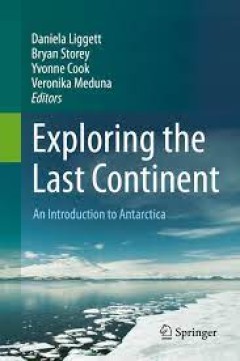
Exploring the Last Continent An Introduction to Antarctica
This multi-disciplinary book will cater to students and those who want to have a more critical look behind the scenes of Antarctic science. This book will take a systems approach to providing insights into Antarctic ecosystems and the geophysical environment. Further, the book will link these insights to a discussion of current issues, such as climate change, bio prospecting, environmental mana…
- Edition
- -
- ISBN/ISSN
- 978-3-319-18947-5
- Collation
- IX, 597
- Series Title
- -
- Call Number
- -
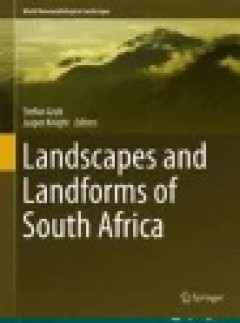
Landscapes and Landforms of South Africa
This book presents a beautifully illustrated overview of the most prominent landscapes of South Africa and the distinctive landforms associated with them. It describes the processes, origins and the environmental significance of those landscapes, including their relationships to human activity of the past and present. The sites described in this book include, amongst others, the Blyde River Can…
- Edition
- -
- ISBN/ISSN
- 978-3-319-03560-4
- Collation
- -
- Series Title
- -
- Call Number
- -
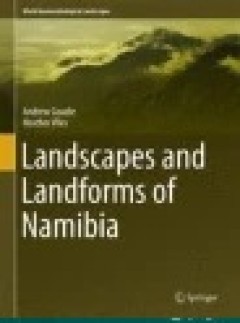
Landscapes and Landforms of Namibia
The landscapes of Namibia are of world-class quality in beauty, diversity and interest. This book provides the first ever overview of the most important of these landscapes, explains why they look as they do, and evaluates why they are of note. Writing from a geomorphological perspective, the authors introduce the key processes and controls which influence landscape and landform development in …
- Edition
- -
- ISBN/ISSN
- 978-94-017-8020-9
- Collation
- -
- Series Title
- -
- Call Number
- -

Landforms of the World with Google Earth: Understanding our Environment
This book of phenomenal illustrations provides a wealth of visual information on the wide variety of landform processes over all latitudes, climates and geological time-scales. It invites you to observe the surface of planet Earth, to appreciate its astonishing beauty and to explore scientific explanations for the form of our landscapes. 250 full-colour images from Google Earth enable all type…
- Edition
- -
- ISBN/ISSN
- 978-94-017-9713-9
- Collation
- -
- Series Title
- -
- Call Number
- -
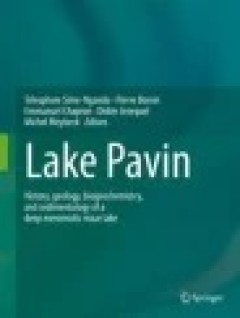
Lake Pavin: History, geology, biogeochemistry, and sedimentology of a deep me…
This book represents the first multidisciplinary scientific work on a deep volcanic maar lake in comparison with other similar temperate lakes. The syntheses of the main characteristics of Lake Pavin are, for the first time, set in a firmer footing comparative approach, encompassing regional, national, European and international aquatic science contexts. It is a unique lake because of its perma…
- Edition
- -
- ISBN/ISSN
- 978-3-319-39961-4
- Collation
- -
- Series Title
- -
- Call Number
- -

Evapotranspiration Over Heterogeneous Vegetated Surfaces Models and Applicat…
The focus of this work is the development of models to estimate evapotranspiration (ET), investigating the partitioning between soil evaporation and plant transpiration at field and regional scales, and calculating ET over heterogeneous vegetated surfaces. Different algorithms with varying complexities as well as spatial and temporal resolutions are developed to estimate evapotranspiration from…
- Edition
- -
- ISBN/ISSN
- 978-3-662-46173-0
- Collation
- 29 b/w illustrations, 36 illustrations in colour
- Series Title
- -
- Call Number
- -
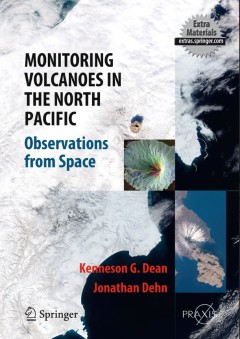
Monitoring Volcanoes in the North Pacific
This book provides a unique visual experience, showing satellite images of volcanic eruptions worldwide and detailed observations from the North Pacific ‘ring of fire’. Daily volcano monitoring and analysis from this region have resulted in one of the most detailed collections of satellite images in the world. An international team of experts has provided comprehensive cov…
- Edition
- 1
- ISBN/ISSN
- 978-3-540-24125-6
- Collation
- XXXIII, 363
- Series Title
- Springer Praxis Books
- Call Number
- -
 Computer Science, Information & General Works
Computer Science, Information & General Works  Philosophy & Psychology
Philosophy & Psychology  Religion
Religion  Social Sciences
Social Sciences  Language
Language  Pure Science
Pure Science  Applied Sciences
Applied Sciences  Art & Recreation
Art & Recreation  Literature
Literature  History & Geography
History & Geography